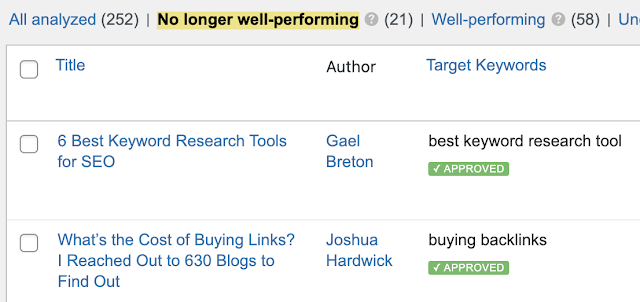SEO Content Writing Ultimate Guide for Beginner 2023 SEO Series Ch 4. Why is SEO Content Important ? How to Create SEO Content Writing SEO friendly Article Updatez.
If you find any mistake in this article then inform me by the comment box which is in the last of this article.
At Written Updatez, we write SEO friendly and unique content for you. We have many blog posts related to SEO factors for giving you meaningful & useful information.
In this the fourth chapter in the SEO series you can read in it What is SEO Content Writing ? Why is it Important ? How to create SEO content ? and more about SEO friendly & unique content creation. In this chapter of the SEO series you can read only two main types.
In the 1st Topic
of this chapter you can learn the Importance of SEO Content Writing & also that how can it help to rank in search engines
What is SEO Content Writing?
SEO content writing is the process of creating website content with a focus on search engine rankings. Using the appropriate language and structuring the content in a way that search engines can understand are part of this. The objective is to increase website traffic and increase its popularity.
Why is SEO Content Important?
Google returns a list of results when someone types something into the search engine. The purpose of SEO content is to help websites rank higher. This is crucial because, since the majority of users only click on the first few results, a website that is not at the top may not receive many visits. Websites can draw more visitors and expand your business by employing the appropriate keywords and crafting content in Google's preferred manner.
In the 2nd Topic
of chapter 4 you can learn that how to create SEO content & more about its creating method.
How to Create SEO Content ?
A few key steps in building SEO content can increase your website's position in search engine results. You first need to find the words and phrases that your target audience uses to search for content comparable to yours. You can use tools like Google Keyword Planner to help with this study.
Plan the type of content you want to produce and how you will optimize it for SEO once you have your keywords. This can include adding keywords to the title, headings and body of the content.
Make sure the content is well written, educational and easy to read when creating it. Use your keywords naturally rather than cluttering the article with them, and add images to increase visual appeal.
Also, it is important to promote your content. To increase your authority, spread the word about it on social media and other websites and work to establish connections with trusted sources.
Finally, monitor traffic to your website and your position in search results to gauge how effective your content is and make any necessary adjustments. You can create SEO content that drives more traffic to your website by following these steps.
1. Choose a proven topic
Choosing a proven theme is crucial to developing SEO content that works. An issue that has already proven popular with its target audience is called proven. If you choose a topic that is already highly appreciated, the chances of your content being shared and viewed increases. Here are some tips to help you choose a proven theme for your SEO content:
Use keyword research tools: You can find hot topics and popular keywords in your niche by using programs like Google Trends, Buzzoo, and Ahrefs. You can use these tools to check what topics are hot right now and what kinds of things are performing well on search engine results pages (SERPs).
Analyze your competitors: content to see what topics are trending and what types of articles connect with your target audience. Check out the topics covered by your competitors' content that dominates the SERPs to see what they're writing about.
Check Social Media: If you want to know what topics are popular with your target audience, social media is a great place to look. Use networks like Twitter, Facebook and Instagram to find out what kind of content your target audience is sharing and engaging with.
Consider your audience's pain points: your target audience faces, then create content that solves those problems and difficulties. You can get more views and position yourself as an authority by creating content that solves a problem for your audience.
2. Analyse search intent
When you examine search intent, you're trying to understand the searcher's thought process. You need to understand why they are searching and what they hope to discover. You can create content that is more beneficial to them. For example, if someone types "how to train a dog" into Google, they probably want to learn some training tips and tricks.
They are more likely to find and share your content if it contains the information they are looking for. Additionally, understanding search intent allows you to determine popular forms of content for a given topic. This can help you choose whether to target that specific demographic with a blog post, video, or infographic, for example. In general, understanding search intent is important if you want to provide content that meets the demands and interests of your target audience.
3. Check your experience
When writing SEO content, it's important to test your knowledge, especially for topics like Your Money or Your Life (YMYL). Because of the potential positive impact on readers' happiness, health or revenue, Google places more weight on content that exhibits knowledge in these fields.
General knowledge is usually sufficient for non-YMYL topics. If you have enough life experience to qualify as an authority on the subject, you're ready to get started. However, formal experience is more important for YMYL topics. Nevertheless, some subjects may still benefit from general knowledge. For example, a patient might answer the question "What does it feel like to have cancer?" More effectively than a medical professional.
You can use the flowchart provided by Google to determine whether or not to cover a topic. This can help you determine if you have the knowledge to create high-quality content that is beneficial to your target audience.
4. Cover the topic thoroughly
You need to understand what search engines are looking for in order to create useful content that appeals to them. You can get a good idea by looking at search intent, but that's not enough.
There are two techniques you can use to ensure that your content contains what users are looking for:
Find top ranking sites for your desired keywords to earn sub-topics and recurring points. Subheadings can serve as an effective cue.
Find the top ranking pages for popular keyword rankings. These can highlight relevant topics that are important to your audience.
Use a tool like Ahrefs' Content Gap to find subtopics and aspects that your content should focus on. Characters can show you, for example, that if your target keyword is "content audit," search engines are also interested in knowing what a content audit is, and why they should perform it. , and tools and templates are required.
By adding these subheadings and bullet points to your content, you can provide search engines with a more comprehensive and valuable resource. This will increase your chances of appearing higher in search results and increase traffic to your website.
5. Make it unique
When there is so much material available online, it can be challenging to make your content stand out. But here are some pointers to assist you in producing original content:
Create a distinct viewpoint: Start by assuming a novel angle on your subject. Think about what distinguishes your strategy from others, and base your material on that.
Conduct original research: You can produce original material by using the unique insights and data you can obtain from conducting your own study.
Tell a Story: To produce engaging and original material, use storytelling strategies. People enjoy stories, which can help your material stand out from the competition.
Add Your Voice: To make your writing stand out, infuse it with your personality and writing style. Make your content more interesting by using personal stories, humour, or anecdotes.
Use multimedia: To make your material stand out and become more engaging, include various sorts of media, such as videos, infographics, or photographs.
Avoid plagiarism by making sure your information is unique and not a copy of another source. Plagiarism can harm both your reputation and reputation.
6. Make it "sticky"
Making your material memorable and engaging for your readers is the key to making it engaging. Here are some pointers to assist you in producing sticky content:
Keep your target market in mind: Be aware of your readership and what they like to read. Make material that appeals to them, addresses their issues, and adds value.
Use attention-grabbing headlines: Your headline is the first thing readers will notice, so make it fascinating and catchy. Readers may click and continue reading after reading an intriguing headline.
Make it Scannable: The majority of internet readers scan text, therefore make it simple to read and understand. To break up the material, use headings, subheadings, bullet points, and brief paragraphs.
Use images: Visual material, such as pictures, videos, infographics, and charts, can help readers remember and be interested in what you have to say.
Tell stories: Stories are a powerful way to connect with readers and make your content more relevant. Use stories, case studies, or personal experiences to illustrate your points.
Add interactive elements: Quizzes, polls, and surveys can help make your material more engaging by boosting engagement.
Offer value: Ensure that your material offers your viewers something worthwhile. In some way, you must enlighten, educate, amuse, or inspire people.
7. Always keep it green
The content is not always updated. This is a problem if you are focusing on high -speed movements. This means that Google keeps happy and search engines will have to work to maintain its latest content.
For example, Google estimates the traffic trend for our list of important searches up and down.
This happens because the theme demands new content. Search engines do not want Google's list of important searches; they want to update something. Each descent came when our content was obsolete, and when we updated the page, each increased.If this is a WordPress user, you can focus on a decrease rating with our free WordPress SEO completion. Just set up an objective keyword for each page and tell you what the rating begins to decline. Then you can investigate whether the content needs to be updated.
Closing Words:
We hope you are enjoying this SEO Series and gain a lot of knowledge from this course. We hope you like this fourth chapter as much as chapters 1, 2 & 3.










No comments:
Post a Comment